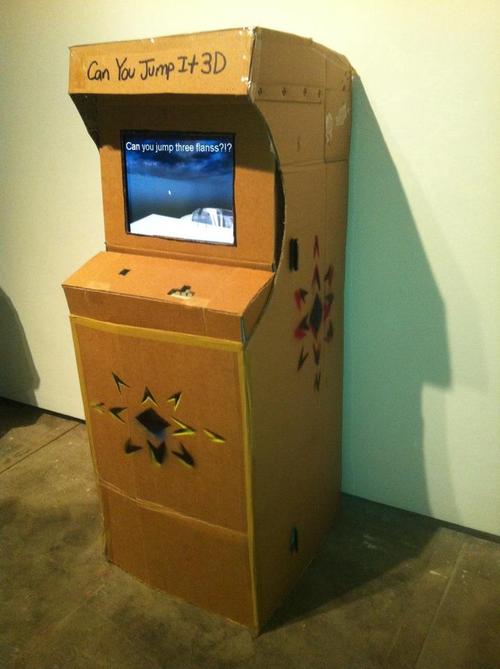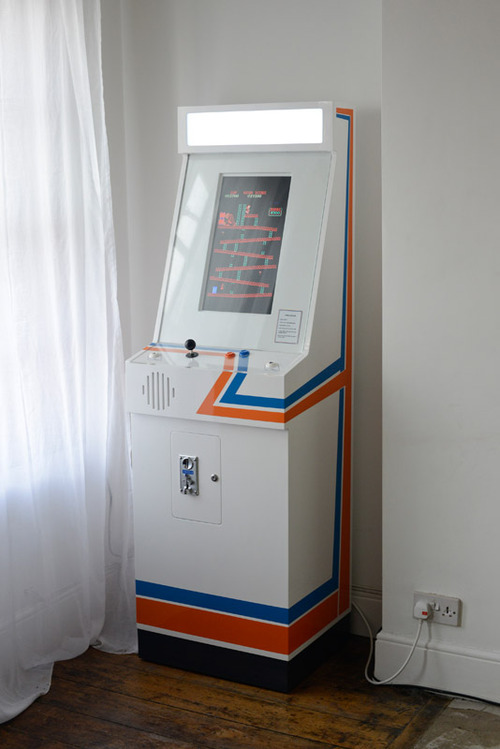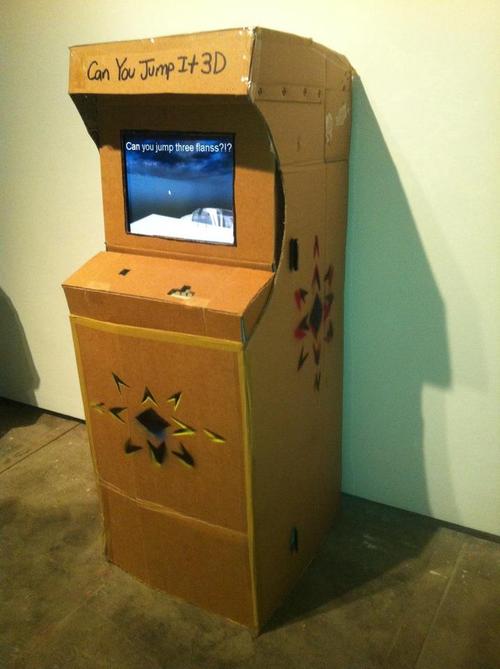Smiling as she gestures at the interior of Little Berlin, a large gallery space in one of Philadelphia’s old factories in the Kensington neighborhood that is currently full of homemade arcade video game booths, Punk Arcade co-curator and games professional Sarah Brin recalls the story of Anna Anthropy’s game. It broke down during transportation, she says, at the height of Occupy Oakland. “So you had all these people pushing it through the streets,” Brin recalls. An appropriately populist touch for an exhibition expressly made for people outside the pale of professional game development, the Punk Arcade video games are just one part of a culture that’s been permeated by the DIY ethic.
With the internet, no subculture or industry is cloistered anymore; everything is subject to democratization. Although a number of the Punk Arcade designers have worked at AAA companies – the heavyweights of the video game industry, it’s clear that they wanted to make their own rules. Much of the know-how from the professional game design world is present here. Termed “video game zinesters” by game designer Anna Anthropy, these upstarts are creating work that anybody could make, given the time and the basic tools – in Punk Arcade’s case, the bare-bones software Scratch, with which all the games were constructed.
Brin’s career in game design began at University of Southern California (USC), where the majority of her work involves a participatory element – precisely what’s on display here. Artists’ games, public spaces, and participatory exhibition-making are her passions, and she’s designed for noted game collective Babycastles, among others. Once all the participants had been contacted and brought on board – mainly through Brin’s network of contacts, the games were built in “game jams,” where people gather, pick a theme and create it in a set amount of time. The indie game movement has gained significant traction over the years, aided by the internet’s growing dominion over all forms of knowledge – no matter how esoteric or niche.
When asked if they’re all difficult games to play, Brin disagrees. Punk Arcade represents the spectrum of work produced by the DIY video game community, she explains, and that’s why you’ll find one game designed by a five-year-old girl and her father (Sissy’s Magical Ponycorn Adventure by Ryan and Cassie Creighton of Toronto, Canada), another by a seasoned DIY games pioneer (Anna Anthropy,somewhat of a patron saint for indie games). Jet Pack Basketball came from Mark Estrin, who’s shown at the Whitney Museum. The “Immoral Ms. Panic” comes from Hannah Epstein, an alumna of the Difference Engine, a collective named after a game by Ada Lovelace – “an underrepresented one,” says Brin. Keep Me Occupied by Anna Anthropy is unique among the games for its dependence on teamwork between the two players, involving things like holding doors open for one another in the game. The twist is that if you die, you’re left holding a door open for future players.
The games range from the extremely light-hearted to the extremely topical. There’s no overarching narrative to connect them, other than the desire of their creators to make their own games on a shoestring budget in a minimum of a week, which is not to say that it’s a seat-of-the-pants exhibition at all – a tremendous amount of thought and planning goes into every stage of Punk Arcade. Co-curator Lee Tusman, Brin says, is instrumental in getting everything to work, a dauntingly ponderous task when dealing with homemade games made in record time. Tusman, also an artist, shares Brin’s passion for the participants’ games, moving enthusiastically around the room to show one visitor how to use the teddy bear controller for Lindsay Grace’s Big Huggin’ (the name is self-explanatory), another the insanely difficult Tennes by Jan Willem Nijman, a modern update on the perennial classic Pong.
If Brin has her druthers, Punk Arcade will leave the confines of Little Berlin and travel cross-country to where the DIY games show began: California. This is where the seed of the idea was planted as she began her line of work, and she hopes to bring the exhibit back out once it’s had its run here in Philly. “I want to bring it to LA,” says Brin. “The hard part is coordinating everything.” Considering that the Philly show came together in such a rapid amount of time, this seems more pragmatic than pessimistic. Even when one of the games breaks down, with visitors glancing around sheepishly to absolve themselves of responsibility, it feels like less of a downside and more of a wry mark of authenticity and humanity.
For those entranced by Punk Arcade and hoping to learn how to replicate this experience on their own, Little Berlin is hosting aGlorious Trainwrecks workshop on October 20th from 2PM-4PM. Guests can make their first games in under two hours using Massachusetts Institute of Technology’s (MIT) game-maker Scratch. The Punk Arcade opened on Friday, October 5th, from 6PM to midnight at Little Berlin (continuing each subsequent Saturday to the end of the month).
Punk Arcade
Little Berlin
Saturday, October 13, 20 & 27 from 12PM-5PM
(Also by Special Appointment)
2430 Coral Street
Philadelphia – Kensington



